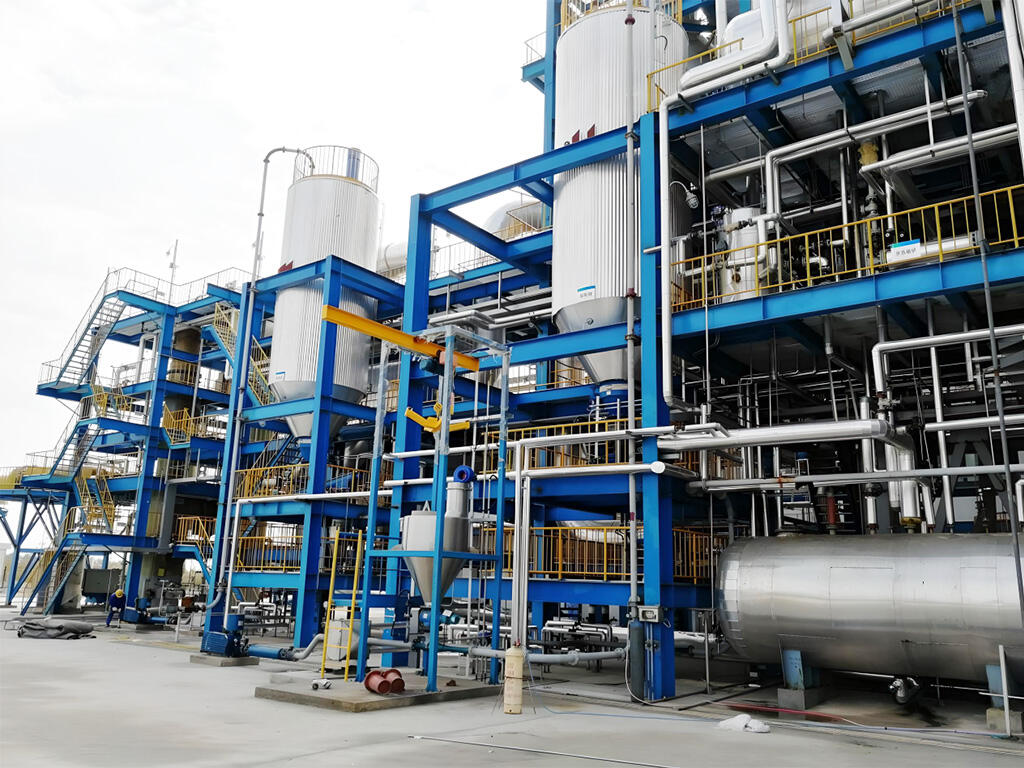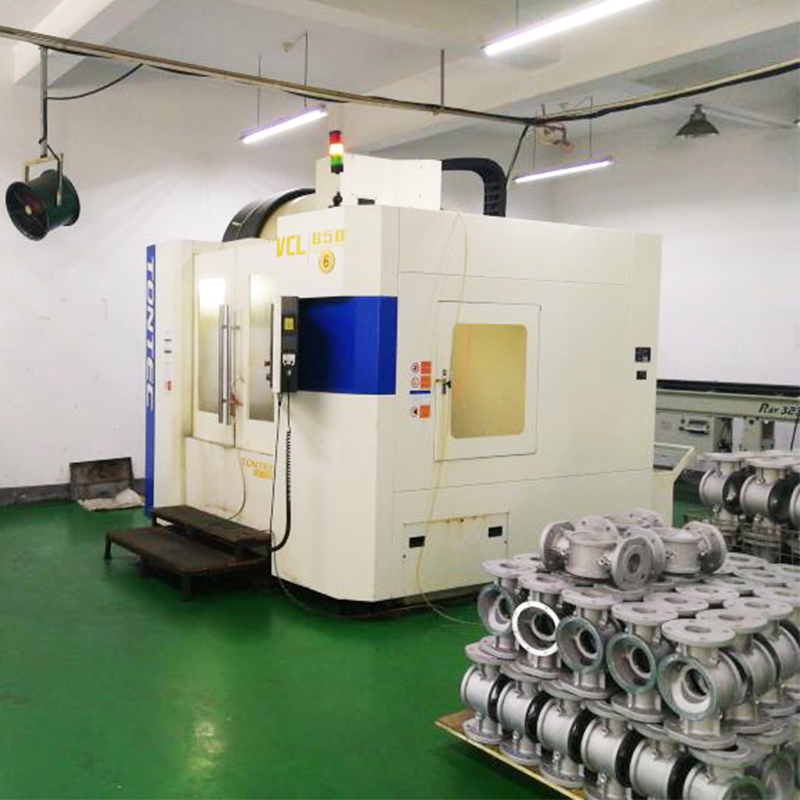Дайектік әсер ететін электромагниттік жабдықтар: төмен шығын қолданбалары үшін компакт дизайн
Тікелей әрекет ететін электромагниттік клапандар электромагниттік күш клапанның өзіне түсірілгенде жұмыс істейді, олардың жылдам әрекет ету уақытын қамтамасыз етеді. Осындай конструкциясына байланысты олар қысым жоғары болмаған жағдайда, мысалы, су беретін құрылғыларда немесе жабдықты орнату үшін орын аз болған гидравликалық орнатуларда қолдану үшін өте тиімді. Көптеген модельдер екі жолды немесе үш жолды нұсқалар ретінде келеді, бұл инженерлердің түрлі тізбектерге қосымша өзгертулерсіз оларды орнату мүмкіндігін береді. Компакт өлшемдері мен жылдам реакциясының арқасында көптеген өнеркәсіптік жүйелер басқа жаңа алмаспалар болса да осындай клапандарға сенеді.
Пилот басқармалы электромагниттік пенделер: Ултты басындағы системаларға идеалды
Пилоттық басқарылатын электромагниттік клапандар жүйедегі әлдеқайда үлкен негізгі клапанды басқаратын кіші пилот клапанмен сипатталады, оларды ерекше тиімді етіп жоғары қысымды ортада пайдаланады. Бұл клапандардың жұмыс істеу принципі жүйелер арасындағы үлкен қысым айырмашылықтарын басқару мүмкіндігін береді, сондықтан олар өндірістік зауыттар мен құрылыс техникасында кеңінен таралған. Энергия тұтыну тұрғысынан пилоттық басқарылатын нұсқалар шын мәнінде тура әсер ететін нұсқалармен салыстырғанда қуат үнемдейді, себебі электромагниттің бүкіл клапан механизмін тікелей қозғалтуының орнына тек кішігірім пилот компонентін ғана белсендіру қажет болады. Сол себепті мұндай клапандар мұнай қайта өңдеу зауыттарында және газ өңдеу кәсіпорындарында кездеседі, онда қауіпсіздік шегі мен жұмыс шығындары жүйелермен күнделікті жұмыс жасайтын зауыт инженерлері үшін өте маңызды.
Жоғары деңгейде шығу соленоидтік клапаннары: Ұзақ көлемдерді тиімді тәсілмен басқару
Жоғары ағынды электромагниттік клапандар үлкен сұйықтық қозғалысын басқарады және суару жүйелері мен химиялық өңдеу зауыттары сияқты жылдам ағын жылдамдығы қажетті жүйелер үшін маңызды болып табылады. Бұл клапандар жүйе бойынша қысымның жоғалуын азайтып, сонымен қатар максималды өткізу мүмкіндігін сақтап, жақсы жұмыс істейді. Көпшілік моделдер екі конфигурацияда келеді: әдетте ашық немесе әдетте жабық, қолданудың нақты талаптарына байланысты. Қазіргі заманғы өнеркәсіптік сұраныстарды қарастырғанда, көптеген өндірушілер көлемі үлкен операциялар үшін осындай жоғары сыйымдылықты клапандарға жүгінеді, онда үлкен көлемдерді басқару ең маңызды болып табылады. Ауыл шаруашылығы өрістерінен бастап өндірістік кәсіпорындарға дейін, дұрыс клапанды таңдау қор ресурстарын қажетсіз шығындауға жол бермей, үздіксіз жұмысты сақтауда маңызды рөл атқарады.
Нормалды Ашу мен Нормалды Жабу Соленоид Жабу Шаңырақтары
Нормалды Ашу (NO) Жабу Шаңырағының Функциясын Анлату
Орамға ток берілген кезде, әдетте ашық (NO) электромагниттік клапандар сұйықтықты өткізіп жібереді, сондықтан олар сұйықтық бақылауын автоматтандыру қажетті жүйелерде жақсы жұмыс істейді. Бұл клапандар, мысалы, суару жүйелерінде, онда су тұрақты бақылау болмаған жағдайда өзінен-өзі ағуы тиіс болған кезде қолданыс табады. NO клапандардың ерекшелігі олардың құрылысының қарапайымдылығында, бұл көбінесе техниктер үшін орнату мен жөндеуді қарапайым жұмысқа айналдырады. Дәл осы қарапайымдылық әртүрлі салаларда бұл клапандардың кең таралуына әкелді. Сондай-ақ, олар өндірістік циклдар кезінде өндірістік басшылардың бағалайтын тұтынуды азайта отырып, операцияларды жүргізуге жеткілікті тез әрекет етеді.
Тренингтің нормалды түрде жабылған (NC) клапандар safety-критикалық системелерде пайдалылығы
Тұрақты тұйық (NC) электромагниттік клапандар ток өткізгенге дейін жабық күйде тұрады, бұл әртүрлі салаларда қауіпсіздік шаралары ретінде маңызды рөл атқарады. Электр тоғы кетіп қалған кезде не болатынын ойланыңыз? Осындай жағдайларда, әсіресе отынды тарату желілерінде немесе желдету жүйелерінде, бақылауды жоғалту тез арада қауіпті салдарларға әкелетінін ескеру керек. Қажет болғанға дейін ашылмауы сұйықтықтардың кездейсоқ кетіп қалуын болдырмау үшін барлығын тығыз жабық күйде ұстайды. Қауіпсіздікті сақтау өте маңызды болған өндірістік орындарда жиі орнатылады, мысалы, жанғыш заттарды бақылау жүйелері мен жылыту жүйелерінде. NC клапандардың ерекшелігі – тек қажеттілік туындаған жағдайда ғана сұйықтықты өткізу сенімділігінде, зауыт басшылары қауіпсіздікті қамтамасыз ететін жүйелерде күнделікті тәжірибеде пайдаланады.
Өз қолданбаларыңыз үшін NO және NC арасында таңдау
Нормалды ашық (NO) және нормалды жабық (NC) клапандарды таңдау кезінде жүйенің талаптары мен қауіпсіздік факторлары басым болуы керек. Жүйе арқылы қандай зат ағып өтетіні, қоршаған орта факторлары және клапан неғұрлым күтпеген жағдайда істен шығарса қандай салдар болуы мүмкін екенін бағалау қажет. Клапан өндірушілерімен тікелей сөйлесу көбінесе белгілі бір қолданыс үшін ең тиімді нұсқаның қандай екенін анықтауға көмектеседі. Дұрыс тепе-теңдік табу ең маңызды. Жақсы таңдау жүйенің қауіпсіздік стандарттарын сақтай отырып, әртүрлі өнеркәсіптік орталарда қажетті өнімділік көрсеткіштеріне сәйкес келетіндей етіп, тиімді жұмыс істеуді қамтамасыз етеді.
Санаттар арасындағы негізгі қолданбалар
Қосмекендік автоматика: өнеркәсіптегі дәлдік басқару
Өндірісті автоматтандыру ортасында жұмыстық сұйықтар мен газдардың қозғалысын бақылау үшін соленоид клапандар маңызды басқару мүмкіндігін ұсынады. Олар өндіріс алаңындағы құрылғылар, мысалы, формалау машиналары, бүріккіш форсункалар мен қаптау желілерінен дәл нәтижелер алу үшін өте маңызды болып табылады. Әртүрлі сенсорлар мен басқару блоктарымен қосылған кезде, бұл клапандар операторлардың нақты уақыт аясында жүріп жатқан процесстерді бақылауына және қажет параметрлерді реттеуге мүмкіндік береді, сөйтіп барлық операцияларды бұрынғыдан тиімдірек орындауға көмектеседі. Соңғы кезде әртүрлі саладағы көптеген өндірушілер автоматтандырылған жүйелеріне соленоид клапандарды енгізіп жатқанымен, олар сапаны тұрақтандырып, уақыт пен ресурстарды ұзақ мерзімде үнемдеуге көмектесетін сенімді құрал болып табылады.
ЖАҚ Системалары: Ауа жылжымын және суықтарды регулировка
Соленоидты клапандар жылыту мен салқындату функциялары дұрыс жұмыс істеуі үшін ауа ағынын және жүйедегі суытқыштың қозғалысын басқаратын ЖЖЖ жүйелерінде маңызды рөл атқарады. Бұл компоненттер ресурстарды үнемдеуге көмектеседі, себебі жүйедегі қысым деңгейлерін басқарып қана қоймай, сонымен қатар ресурстарды үнемдеуге мүмкіндік беретін суытқыштың құйып кетуіне кедергі келтіреді. Көпшілік заманауи орнатуларда бұл клапандар термостаттар мен басқару панельдерімен автоматты түрде қосылған, сондықтан бұл үй-жайдағы жалпы ыңғайлылықты арттыратын түзетулер қолмен емес жүзеге асырылады. Климаттық жағдайлар мен пайдалану үлгілеріне байланысты клапандар әртүрлі жағдайларға тап болатындықтан, техниктер жедел жөндеу кезінде оларды кезекпен тексеруі тиіс. Жақсы жөнделген соленоидты клапан ЖЖЖ жүйесінің тоқтаусыз жұмысы мен уақыт өткен сайын жақсырақ өнімділік көрсетуге мүмкіндік береді.
Қорғаныс сістемаларындағы жұмбақталу үшін газ соленоид көпшілері: қорғаныс қауіпсіздігі
Көптеген салалардағы жанғыш жүйелерде газдың электромагниттік клапандары жану үрдісін қауіпсіз жүргізу үшін газ ағынын басқару арқылы маңызды рөл атқарады. Егер нәрсе істен шықса, бұл клапандар газ тасымалын автоматты түрде тоқтатып, қауіпті жағдайлардың дамуын тоқтатады. Олардың пайдалылығы әртүрлі газдармен жұмыс істеу қабілетінде, сондықтан олар үйде жылыту жүйелерінен бастап ірі өнеркәсіптік операцияларға дейінгі барлық нәрсеге сәйкес келеді. Газ жабдықтарымен жұмыс жасайтын адамдар үшін клапанның сенімділігі жүйенің жалпы қауіпсіздігіне тікелей әсер ететіндіктен өте маңызды. Өндірушілер өз өнімдері күнделікті өмірде кездесетін нақты жағдайларға төтеп бере алатындай болу үшін өндіру барысында қатаң сапа бақылауларына сәйкес келуі керек.
Қаламсыз клапан таңдау үшін не істейміз
Басықтық, температура және төмендеу шарттарын бағалау
Дұрыс соленоид клапанын таңдау әрбір күнгі жүйеде қандай қысым, температура өзгерістері және ағын жылдамдығы болатынын білуге тәуелді. Әрбір клапанның қалыпты жұмыс жасау жағдайында қандай күштерге шыдайтынын көрсететін өндірушінің техникалық сипаттамаларын әрқашан тексеріңіз. Кейбір адамдар күрделі жүйелермен жұмыс істеген кезде қателесу келесі проблемаларға әкелуі мүмкін болған жағдайда, интернетте қол жетімді есептеу құралдары арқылы көрсеткіштерді тексеруді немесе маманға хабарласуды ыңғайлы санайды.
Материалдық жаналыстық (сірек, газ немесе коррозиялық)
Соленоид клапанының ұзақ мерзімді пайдалануы мен өнімділігін сақтау үшін материалдардың үйлесімділігі ең маңызды орындардың бірін алады, әсіресе коррозияға ұшырайтын немесе агрессивті ортада жұмыс істеген кезде. Қола, нержавеющая болат немесе арнайы пластмассадан жасалған клапандар қолданылатын жағдайға байланысты таңдалуы керек.
AC vs. DC Магына: Магына қорытындысын сәйкес ету
Айнымалы ток пен тұрақты токтың ортақ магниттік клапандарындағы айырмашылықты түсіну электр жүйелерімен жұмыс істеу кезінде үлкен айырмашылық жасайды. Көбінесе жүйелер біреуін немесе екіншісін қажет етеді, сәйкесінше дұрыс емес таңдау әрі қарай қиындықтарға әкелуі мүмкін — тиімсіздіктен бастап тіпті жабдықтардың шығып қалуына дейін. Белгілі бір клапан моделін таңдау алдында алдымен қуат сипаттамаларын тексеру болашақтағы қиындықтарды болдырмауға көмектеседі. Әсіресе өндірістік кәсіпорындар осындай көрсеткіштерді қосымша тексеруі тиіс, өйткені кері кернеулердің сәйкес келмеуі уақыт өте келе операцияларды ұзақ уақыт бұзып қоймауы мүмкін.
Уақытша ұзақтық пен достық үшін сақтау ұсыныстары
Клапан компоненттеріндегі замзамдаманы дайындау
Егерде жүріштік клапан бөліктеріне лас немесе қалдықтар түссе, олардың жұмысын айтарлықтай бұзады, сондықтан жүйе арқылы қозғалып жүрген заттар мен клапандардың өзі тұрған жерлер үшін тазалықты сақтау өте маңызды. Сүзгілерді регулярлы тексеру де маңызды, шарттарға байланысты әрбір бірнеше ай сайын және қажет болған жағдайда оларды ауыстыру барлығының тегіс жұмыс істеуіне көмектеседі. Жұмысшылардың орнату және жөндеу кезінде осындай компоненттерді дұрыс пайдалану бойынша жақсы дайындалуы қажет, себебі кішігірім қателер де қалауыңыз келмейтін ластаушыларды енгізуі мүмкін. Көптеген кәсіпорындар тазалау процедураларын дұрыс ұйымдастыру ұзақ мерзімде төленетінін байқайды. Клапандар әлбетте ұзақ қызмет етеді, бірақ күнделікті жақсы өнімділік пен күтпеген ақаулар болмауының қосымша артықшылығы да бар.
Жиністер мен қорықтардағы халықтар белгілері
Соленоид клапан жүйелерінде орамдар мен белдіктердің тозып кетуінің алғашқы белгілерін уақытылы байқау авариялық үзілістер мен өндірістік уақытты жоғалтуды болдырмауға көмектеседі. Операторлар клапандардан шығатын ерекше тықылдау дыбыстарына, қосылыстардың айналасындағы көрінетін сұйықтықтың ағып шығуына немесе жүйенің қалыпты жұмыс істеу барысында болжамсыз әрекет етуіне назар аударуы тиіс. Кәсіпорындар осындай тексерістерді техникалық қызмет көрсету жоспарына енгізген кезде, кішігірім ақауларды үлкен проблемаларға айналмай тұрып уақытылы табуға болады. Тозып кеткен бөлшектерді уақытылы ауыстыру тек дұрыс тәжірибе ғана емес, сонымен қатар ұзақ мерзімде ақшаны үнемдеуге көмектеседі. Зерттеулер мұндай тәсілді енгізген кәсіпорындарда апаттық жөндеу шығындары 30%-тан 50%-ға дейін азайып, сондай-ақ жабдықтардың қайта жөнделмейтін ұзақ мерзімді қызмет етуі байқалатынын көрсетті.
Тексеру үшін ең жақсы практикалар
Егер біз уақыт өткен сайын соленоид клапандарымыздың дұрыс жұмыс істеуін қаласақ, кезең-кезеңге қарай тексеріп отыру маңызды. Бұл тексерулердің жазбаларын сақтау клапандардың жұмыс істеуіндегі заңдылықтарды анықтауға көмектеседі, осының нәтижесінде қашан келіп тұрған жөндеу немесе ауыстыру қажеттілігін болжау оңай болады. Клапандардың қалай жұмыс істейтіні және тексеру кезінде неге назар аудару керектігі туралы қызметкерлерді дайындау да маңызды. Білікті қызметкерлер жұмыстың дұрыс рәсімдерін сақтайды және күрделі ақаулар болмас бұрын оларды анықтап үлгереді. Әрине, кейде қарапайым қызметкерлер жеткіліксіз болып қалады. Клапандық жүйелерде маманданған тәжірибелі техниктерді тарту жұмыстың сенімділігін арттырады. Осындай мамандар өзінің тәжірибесі арқылы орташа нәтижеден сенімді жұмысқа дейінгі айырманы жасайды.



